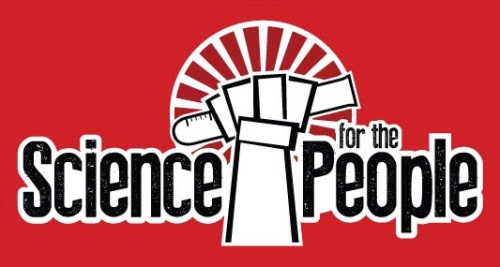Below is another in the "Story Behind the Paper" series. This one is by
Chase Beisel from NC State.
In this guest post, I tell the story behind the
paper my colleagues and I recently published in
mBio. This post briefly recounts the trials and travails of my research group's first publication and describes the remarkable versatility of CRISPR. Before launching into the highs and lows of the idea-to-paper process, I want to thank Jonathan for this unique opportunity to share our story.
CRISPR: an abbreviated tutorial for the uninitiatedOur paper offers a novel application of the CRISPR-Cas adaptive immune systems. Unlike humans' adaptive immune systems, CRISPR-Cas systems use RNA to recognize foreign invaders. Recognition occurs through simple base pairing between the RNA (called CRISPR RNAs) and complementary foreign nucleic acids, leading to target cleavage and degradation. Through a poorly understood mechanism, these systems can acquire new CRISPR RNA-encoding sequences, providing immunity against future infections.
 |
| Overview of DNA-targeting CRISPR-Cas systems. |
One of the remarkable aspects of CRISPR-Cas systems is that synthetic CRISPR RNAs can be designed to guide cleavage of almost any DNA sequence. This ability in turn has opened a remarkably broad set of applications, including genome editing, transcriptional activation and repression, phage defense, genotyping, synthetic restriction enzymes, and curing of latent viruses. I have no doubt that (1) I neglected to mention a few and (2) others will be reported in the oncoming months.
An idea is born The story begins when I was a postdoc in the
Storz lab at the National Institutes of Health. I was characterizing Hfq-binding small RNAs in
E. coli and was interested in understanding and exploiting regulatory RNAs. It was during this time I learned about CRISPR-Cas systems. I was intrigued about the parallels between these systems and RNA interference--the focus of my PhD thesis--where the principal difference was that CRISPR-Cas systems seemed to go after DNA whereas RNA interference went after RNA. Note that this was also at a time (2010) when little was known about the system, let alone its biotechnological potential. At the time, the system had been shown to go after the DNA of foreign invaders, although one of the initial questions was why it didn't go after its own DNA. While excellent work by
Luciano Marraffini and others showed that a few safeguards were in place to prevent self-targeting, other work by
Rotem Sorek and
Udi Qimron suggested or demonstrated that CRISPR could target the genome and (most importantly) that this was a bad thing.
 |
| The idea. |
During a trip to the University of Washington to visit my colleague Georg Seelig, we concocted the idea of targeting the microbial genome with CRISPR on purpose. What was so appealing about the idea was that (1) we were inducing the equivalent of an autoimmune response, (2) targeting would be sequence-specific, and (3) the mechanism of attack was independent of how antibiotics act. For these two reasons, we saw genome-targeting CRISPR RNAs as a "smart" antibiotic that could selectively kill bacteria and circumvent antibiotic resistance. Suffice to say, we were excited.
Obtaining funding (or not) Our first step was to obtain funding for this idea. We first tried the Gates Foundation and the USAMRMC, although neither organization funded the work. Later, I submitted the idea to ARO, NSF, and the Pew Research Foundation. Still no funding. Fortunately, an internal funding source at NC State University provided a small grant to pursue the idea. This grant and my start-up funds were sufficient to carry the project to completion.
The long research path While Georg focused on other pursuits, I began my faculty position at NC State and made this idea one of my lab's first projects. My initial goal was to evaluate how plasmids encoding genome-targeting CRISPR RNAs affect transformation efficiency, an imperfect but reasonable proxy of killing. Heidi Klumpe, a talented undergraduate student who joined my fledgling lab, cloned most of our initial constructs. Unfortunately, we had to go through a few design rounds before finding a construct in which we could easily and cheaply clone in new CRISPR RNAs. During this time, one of my first graduate students, Ahmed Abdelshafy Gomaa, joined the group and began working with Heidi. The two made great progress and, after ample troubleshooting and optimization, settled on a system that showed large reductions in the transformation efficiency (~10
5) when targeting the genome. Anticipating the potential to be scooped (a common experience in the CRISPR field), I convinced Michelle Luo, a more recent graduate student in the group, to help advance the experiments. In the end, the three students were doing endless transformations and dilution plating, then counting colonies over and over again. I am grateful that they never complained.
What was intriguing about these experiments was that only two "design rules" needed to be followed: (1) find a protospacer-adjacent motif or PAM--a short sequence recognized by some Cas proteins--and (2) incorporate the adjacent sequence into a CRISPR RNA. It didn't matter which sequences we targeted, whether the sequences were in coding regions, non-coding regions, top strands, bottom strands. As long as we followed these rules, there was a tremendous reduction in the transformation efficiency.
 |
| Targeted removal. Credit: C. Beisel/mBio. |
We next wanted to prove that the sequence specificity of killing could differentiate even closely related strains. After much debate about which strains to test, we chose our K-12 strain of
E. coli and a B strain, one of its cousins. We needed to find unique sequences between the two genomes, and, although there are likely simple bioinformatics tools to do this, Ahmed manually went through the genomes to find unique sequences. Fortunately, he didn't have to work too hard despite the fact that the bacteria share 99% of the genomic content. The resulting tests confirmed our predictions: target one strain and only that strain transforms extremely poorly. We incorporated
Salmonella to differentiate commensals and pathogens (and to increase the attractiveness of this work to publishers), although these experiments were delayed as we sought BSL2 approval.
A fruitful collaboration During this time, I met Rodolphe Barrangou, a giant of the CRISPR field who was still working in industry. We struck up a friendship that later led to an ongoing collaboration once he decided to join NC State's faculty. Rodolphe has been working with
Streptococcus thermophilus, which encodes four different CRISPR-Cas systems. Through our interactions, we decided that demonstrating genome targeting through two of its endogenous CRISPR-Cas systems would further strengthen the story. Fortunately, the data quickly came thanks to the efforts of Rodolphe's first lab member, Kurt Selle. With these data, we felt that we had a sufficient story to submit for publication.
The publication process Based on the novelty of the idea, general interest in all things CRISPR, our data, and (to a certain degree) my own naivety, we shot high. Unfortunately, we didn't make it past the editors at
Nature Biotechnology, so we next tried submitting a Brief Communication to
Nature Chemical Biology. The editors were kind enough to send it out for review, although the reviewers were not so kind, questioning the novelty of the idea and its downstream potential. However, the reviews were extremely helpful as we repackaged the work and performed additional experiments demonstrating selective removal in mixed cultures and the selective titration of individual strains.
Encouraged by the new version of the paper, we next tried
PNAS. However, we didn't make it past the Editorial Board, so we moved on to
Nucleic Acids Research. Again, the editors said "no"--in this case, because our paper fell outside of the scope of the journal. Not sure where to go next, we chose
mBio, an up-and-coming Open Access journal that publishes broadly across the field of microbiology. Half expecting another rejection before review, we were pleasantly surprised that the paper went out and received positive reviews. After a month of additional experiments, we were able to resubmit the final version that was accepted shortly thereafter. I received the acceptance email on December 20th--a wonderful Christmas present.
The aftermath Matt Shipman in the the News Services Office at NC State prepared a press release for the article--a collaboration I would recommend to researchers who have not interacted with their institution's news office. That said, inaccurately written releases can promise too much, creating false impressions of the work's potential and (if nothing else) annoy your fellow colleagues.
Thankfully, our press release was picked up by a number of science websites.
Nature also highlighted this work in its most recent issue, though I'm not sure whether their interest had anything to do with the press release. Most importantly, through the press release, Matt putt me in touch with Jonathan, and the rest is history.


 I had planned to blast last Thursday’s news of the use of gene-editing to save a British baby from aggressive leukemia. “Two months later, Layla was cancer-free,” proclaimed one of many enthusiastic reports. I’m always
I had planned to blast last Thursday’s news of the use of gene-editing to save a British baby from aggressive leukemia. “Two months later, Layla was cancer-free,” proclaimed one of many enthusiastic reports. I’m always



